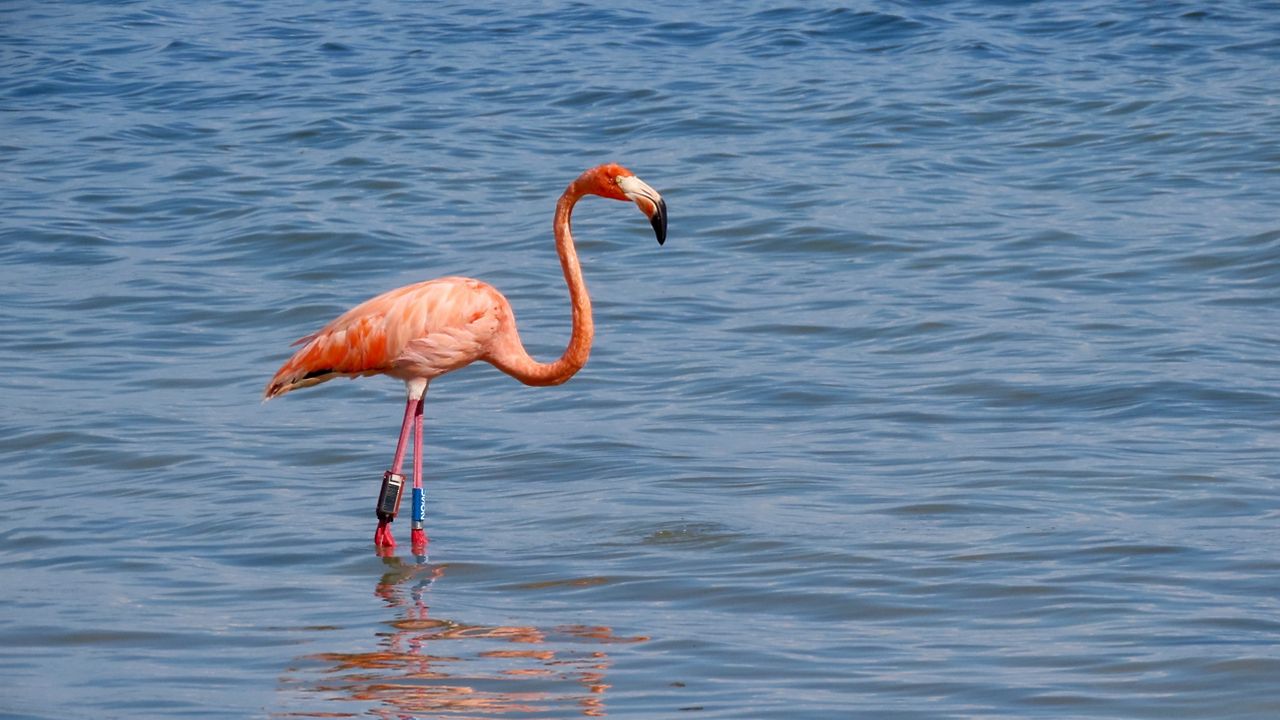TAMPA BAY, Fla. — After Hurricane Idalia brought wind and rain to Florida, it also brought flamingos.
What You Need To Know
- After Hurricane Idalia brought wind and rain to Florida, it also brought flamingos
- Many flamingo sightings were reported on Florida’s shores, and one of them was rescued from the Gulf and rehabilitated by the Seaside Seabird Sanctuary in Indian Shores
- Before the flamingo was released, Audubon Florida research staff tagged it with a geolocator that could give scientists clues about the movements and fates of the birds
Many flamingo sightings were reported on Florida’s shores, and one of them was rescued from the Gulf and rehabilitated by the Seaside Seabird Sanctuary in Indian Shores.
The flamingo, "Peaches," was released by the sanctuary on Sept. 9 at Fort DeSoto Park, where other flamingos have been seen since Idalia. Officials are asking the public to give this and all flamingos in Florida space to rest and feed undisturbed.
Before the flamingo was released, Audubon Florida research staff tagged it with a geolocator that could give scientists clues about the movements and fates of the birds.
Officials with Audubon Florida said that as Idalia passed between the Yucatan and Western Cuba, the strong winds likely swept up flamingos from that region, carrying them to Florida’s coast, adding that sightings were reported on beaches and in other Florida natural areas including in the Keys, Tigertail Beach, Sanibel Causeway, Bunche Beach, Punta Gorda, Charlotte Harbor, Clearwater, Treasure Island, Siesta Key, Tarpon Springs, Port St. Joe, St. Marks National Wildlife Refuge and Lake Pithlachoco, as well as locations in Ohio, North Carolina, South Carolina, Virginia, Kentucky, Texas, Tennessee, Alabama and more.
According to officials with Audubon Florida, the organization's director of research, Jerry Lorenz, PhD, recognized that Peaches represented an opportunity to learn more about wild flamingos and their movements, and the USGS Bird Banding Laboratory agreed and rushed its federal approval for Lorenz and ZooMiami’s Frank Ridgley, DVM, to tag Peaches with bands and a satellite transmitter before its return to the wild. The flamingo will now be part of a study of flamingo movements between breeding grounds and Florida.
Audubon Florida says with the new tracking device, it is hoping to answer the following questions:
- Will the flamingos brought to our shores remain and breed here?
- If they return to the Yucatan and Cuba, will they return in subsequent years?
- Florida once had breeding flamingos year-round. Might we again one day, with the protection and restoration of key habitat, including coastal wetlands, the Everglades and Florida Bay?
“We want these flamingos to stay and raise their families here,” said Lorenz. “If we give them their space, restore their habitat, and keep their water clean, we can hope for a pink future in Florida.”



